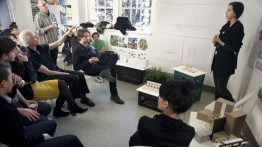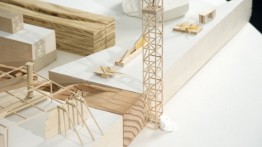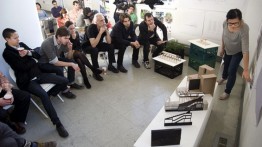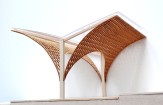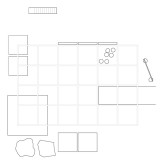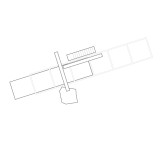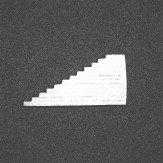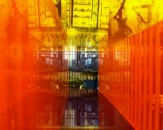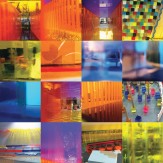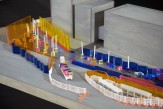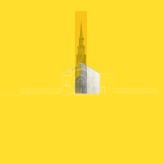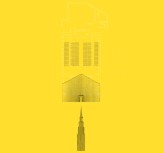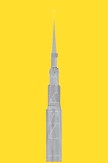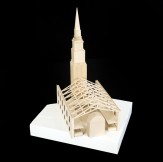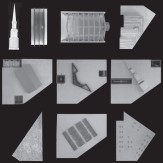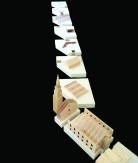Selected Undergraduate Design Studio Projects--Design III, Fall 2011
FALL 2011
Professors David Turnbull, Hayley Eber, Urtzi Grau, Sam Anderson
THE HEART OF THE MATTER
This year we reinvented the third year. The faculty group was consistent for the entire year. The project sequence was designed to build systematically from quick observational projects, to analysis, to a short design project before the winter recess and a semester long design project of some complexity in the spring. This may sound like business as usual, but it is differentiated critically by abandoning the principle that there are two semesters with different faculty teaching in each, and in defining a trajectory that explicitly embraces the social purpose of construction and an ecological consciousness. Guided more or less unconsciously by Felix Guattari’s ecosophy, and Bruno Latour’s insistence on a perspectival shift from matters of fact to matters of concern, the work of the studio is simultaneously pragmatic and utopian, speculative and realistic.
This is important, particularly for the third year. It is often difficult, a rite of passage in the strange journey of architectural education. There are obligations. Explicitly, a building or buildings that are organizationally complex must be designed. An understanding of structural and material performance should be demonstrated. The technologies that modify the climate, elementary building physics, systems design should inform the work, and so on. There are implicit obligations too, concerning the integrity of the architect as much as the integration of structure, services, building envelope and internal arrangements, or the elision of form, program and material. But, however responsible we must be, and however careful the students’ work might be in relation to these considerations, we should also be careful to neglect our obligations when we think that an apparent failure in one sense could be a success in another. Aiming high, we may fly a little too close to the sun, we may fall; in third year a student must become confident enough that they can fall without breaking bones… and that confidence should come with knowledge.
There is a lot to learn.
We started with a short project describing the Bowery, inspired by Martha Rosler’s ‘The Bowery in two inadequate descriptive systems’ (1974–5), the students worked in groups, examining specific qualities offered by the Bowery, reading those qualities with a bias provided by a specific architectural provocation: Learning from Las Vegas, The Manhattan Transcripts, Delirious New York, The ‘As Found’ (AS & PS), Pet Architecture (BOW-WOW). They then looked for a hidden archipelago of ‘islands’—‘cultural production’ sites, minor and major: St. Mark’s Church, The New Museum, STOREFRONT, the PRADA store, The Cooper Union (Foundation Building), The Armory, Alice Tully Hall at Lincoln Center, The MoMA sculpture garden, The Whitney and The Guggenheim. Choosing one, each group made analytical drawings and models developing graphic acuity and analytical skills, in multi-dimensional representations of a setting that could be visited, so that the building could be touched, measured and experienced… but also ‘discovered’ in books, novels, newspapers and magazines, on paper and on-line. They then made a project for the site of The Guggenheim Lab on Houston Street, speculating about the future use of the provisional cultural production site established by the Lab, another island in the archipelago.
Projects
-

Design III Fall 2011 - Forum
-
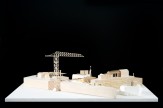
Design III Fall 2011 - Forum
-
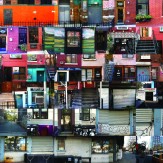
Design III Fall 2011 - A Found Dance In-The-Bowery
-

Design III Fall 2011 - St. Mark's in the Bowery
Back
Design III Fall 2011 - Forum
Forum
Marcela Escobar
Design III Fall 2011 - Forum
Forum
Derrick Benson
Initiated with the intention of creating a cultural institution in Manhattan’s Lower East Side, this project derives its programming from the existing conditions of the site and the history of construction and destruction associated with it.
Programmed as an archive as a means of both establishing a basis for the institution by uncovering a set of narratives that could inform a way of using the site, and to allow these narratives to foster new ones, the forum (as archive) is continuously enacted as a series of snapshots that arise out of an ongoing cycle of construction, destruction and reconstruction.
Insofar as the archive refers both to a material collection and the place in which it is contained - the traces that constitute a record and the space that governs the system by which that record is understood - an architecture providing both context and content becomes laden with fictive possibilities. The forum (as archive) becomes as much about the collection and recollection of stories as it does about their creation anew.
Design III Fall 2011 - A Found Dance In-The-Bowery
A Found Dance In-The-Bowery
William Hood
Working with the provocation of the “as found,” this project began as a two-part analysis of The Bowery and St. Mark’s Church. The findings of these studies later evolved into the programmatic structure of a proposed public forum for architecture, dance and performance art on Houston Street.
A Forum for Both The Found and As Found Choreography
Taking cues from St. Mark’s Church, the proposed forum sought to engage a diverse aggregation of parts in the choreography of a program for dance, performance and large-scale architectural installation (even as big as a house). Whereas the programmatic structure of St. Mark’s was supported by its own history, which was both buried in underground vaults and at play in the memory of the New York avant-garde, the forum intended to re-orient Houston Street’s road construction activity and amplify the vibrant coloration of The Bowery’s urban fabric. As such, the site’s existing cultural and material resources would be employed in the demarcation of a new, fully-realizable public space.
Design III Fall 2011 - St. Mark's in the Bowery
St. Mark's in the Bowery
Derrick Benson, William Hood, Ariana Revilla
This project sets out to explore St. Mark’s Church as a sacred site and cultural island in the city of New York, framing the role of the church as a cultural incubator in terms of its own history and that of the neighborhood surrounding it through a collection of ‘found’ narratives and an understanding of the collaged sequence and distribution of the church’s ritual and performance spaces.
The collection of historical narratives set against the procession of ritual spaces, together fragmented and operating between scales, provide for a varied and associative understanding of the position of the church within its historical and urban context.

